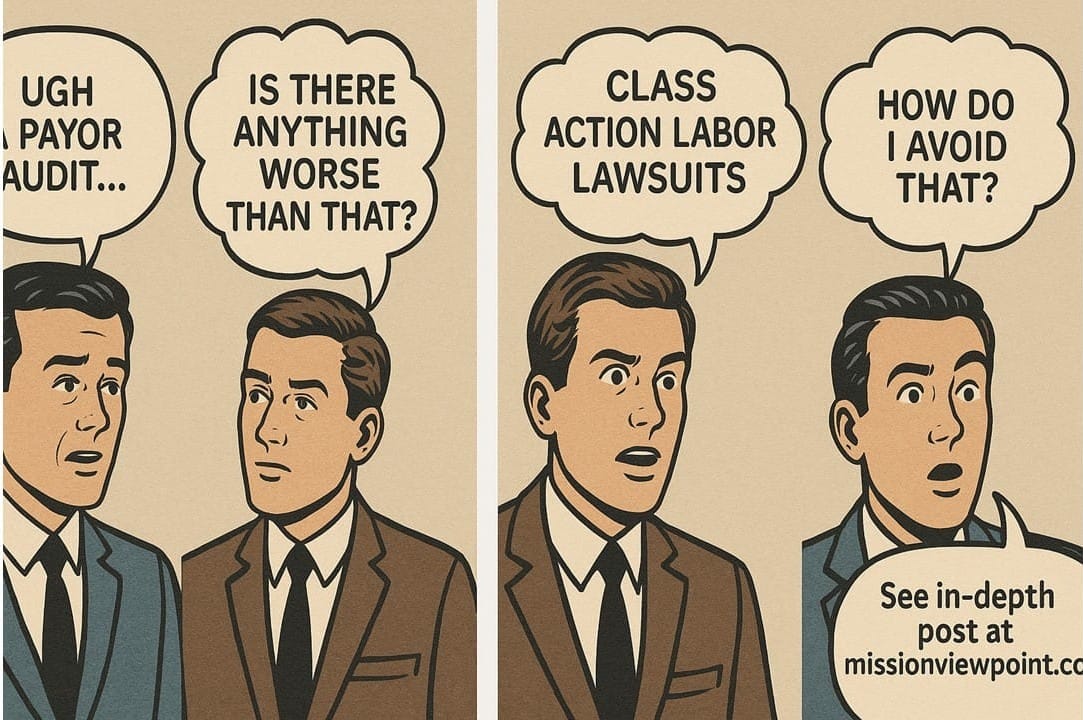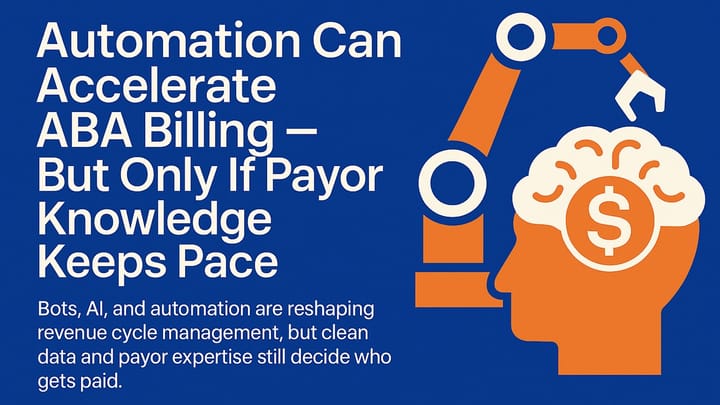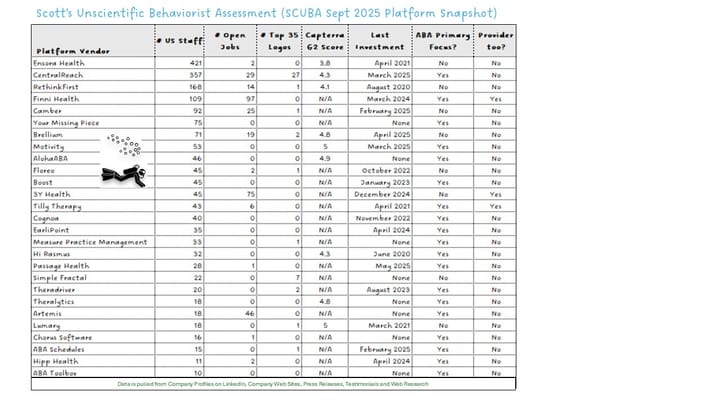The Other Audit: Why Class Action Labor Lawsuits Are a Tech, Ops, and Data Problem

Everyone in ABA knows the dread of a payer audit. But there’s a quieter—and often more dangerous—threat looming in the background:
Class action labor lawsuits.
They don’t just challenge your HR policies. They expose the seams in your scheduling logic, payroll systems, and platform integrations. In short, they surface the operational disarray that lives between your org chart and your tech stack.
Why These Lawsuits Are a Growing Threat
ABA’s frontline workforce—RBTs, paraprofessionals, and part-time clinicians—operates under complex, shifting conditions:
- High turnover
- Varying employment status (W2 vs. 1099)
- Inconsistent schedule patterns
- Home and clinic-based services, often across state lines
All of this makes consistent labor compliance hard to track and harder to enforce—especially when systems aren’t connected.
What Makes This a Multi-State Risk
Some states are already hot zones:
- California – Known for aggressive enforcement under PAGA; violations around breaks and drive time are routine.
- New York, Illinois, Massachusetts – Stronger regulatory climates and active plaintiffs’ bars.
- Colorado, Oregon, Washington – Rising scrutiny in healthcare settings.
But ABA providers operating across states with non-uniform systems face exponential risk. One state’s compliance miss can set a pattern. And one local case can draw national attention.
The Operational Failure Beneath the Lawsuit
When labor violations happen, they’re usually a systems problem, not a policy one.
- Your scheduling tool doesn’t flag when rest break windows are violated.
- Your payroll system can’t see drive time because it’s logged elsewhere (if at all).
- Your subsidiary systems are still operating as if they’re standalone companies.
It’s not that no one cares.
It’s that no one system sees enough of the picture to act in time.
A Smarter Way Forward: Proactive Ops Automation
The most forward-looking ABA providers are moving beyond audits and policy binders.
They’re building automated compliance agents—using logic-driven workflows to catch problems before they happen and fix the ones that do.
Here’s what that looks like:
🔁 Step 1: Continuous Pre-Shift Scans Using RPA Logic
Instead of waiting for weekly schedule audits, systems now run daily or even hourly scans to simulate real-world execution of the current schedule:
- Are legally required breaks planned at the right intervals?
- Are clinicians exceeding state-specific hourly limits?
- Is drive time pushing total hours into overtime or violating split-shift rules?
These checks rely on robotic process automation (RPA) or workflow automation logic that runs across your live scheduling and payroll data, flagging compliance risks before the workday begins.
🛠 Step 2: Resolve in Real Time
Once compliance issues are flagged:
- If a shift can be adjusted without disruption, the system reschedules it automatically and notifies staff.
- If human judgment is needed (e.g., moving a high-priority session), the system creates a ticket routed to ops or clinical leadership for approval.
- If a compliance violation still occurs, the system logs it and can immediately adjust payroll:
- Overtime is automatically added.
- Missed break premiums are applied.
- Wage adjustments are calculated based on local labor rules.
This transforms compliance from a reactive documentation exercise to an active process enforcement mechanism.
📁 Step 3: Maintain an Audit-Ready Data Trail
Every action—scans, decisions, reschedules, adjustments—is logged.
This gives you:
- A defensible audit trail in the event of a claim
- Insight into which locations, supervisors, or schedulers are consistently triggering compliance issues
- The ability to identify repeat violators of policy and address them proactively through targeted coaching or process changes
- A way to validate that policy isn’t just documented—it’s actually enforced
The Business Case: Reduce Risk and Friction
By catching and resolving issues early, you:
- Lower legal risk without relying on HR training alone
- Build trust with frontline staff, who often quit over inconsistent or unfair scheduling
- Avoid future legal discovery fire drills, where you’re forced to reconstruct actions across disconnected systems
- Establish a data-backed compliance program—something investors, acquirers, and regulators are increasingly demanding
TL;DR
Payer audits are expected.
Labor lawsuits are not.
But in a fragmented, multi-state ABA landscape with high staff turnover, compliance must be automated—not just assumed.
If you want to scale sustainably, your systems need to do more than track time.
They need to enforce logic, correct issues before they escalate, and document every step.
📌 Want help designing automated workflows or auditing your current stack for labor law risk?
Reach out



